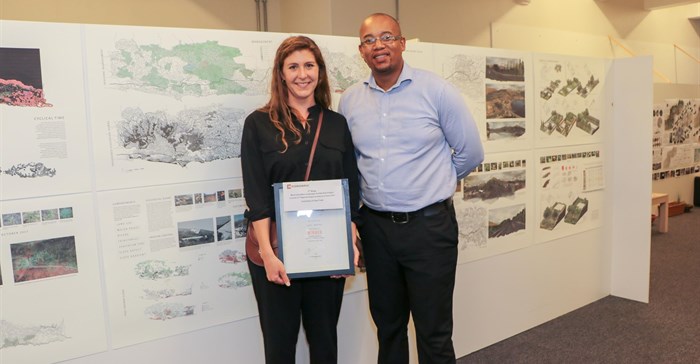
Top stories




LegalTsotsi star’s house, bought with lottery funds, frozen by Special Tribunal
Raymond Joseph 10 hours


More news



Her dissertation - Reconfiguring the Burnt Scar- not only tackled this global problem, but also earned her Corobrik’s Most Innovative Final Year Landscape Architecture Award for 2017.
The annual award – assessed by external examiners - is presented to a landscape architecture student with the most innovative dissertation. All graduating students in the UCT Master of Landscape Architecture programme are eligible for the award. Louise Brukman took this year’s top award, earning her the R6,000 prize with the runner-up, Roux Lubbe, walking away with R4,000 for his dissertation, Bee-cause: designing to receive.
“I’ve always been interested in ‘water-wise’ and ‘fire-resistant’ design, and I was researching this subject in June 2017 when the Knysna fires occurred,” explained Brukman. “I felt there were opportunities within the realms of landscape architecture to assist in repairing what was damaged and preventing future catastrophes on such a massive scale.”
Her concept has a range of applications from small-scale domestic gardens to vast areas of land, including plantations and the like. It assesses fire management and maintenance practices together with the implementation of fire-resistant vegetation strategies.
“I researched integrated landscape architectural systems directed at the protection of both urban and rural areas from micro to macro areas,” she continued. “If a fire breaks out in a micro area, like a domestic garden, this system will form a protective mechanism, retarding and containing the spread of fire to proximate and surrounding areas."
While the dissertation focused on the Knysna region, the principle behind the concept can be applied to various regions globally, with adaptations made to vegetation types depending on the nature of the area.
She explained that the origin of the Knysna fire was within the vicinity of the Pine plantation – a vegetation type that is considered to be an ‘extreme fuel load’. Without sufficient and well-maintained infrastructure or regularly controlled ecological fires, the wildfire spread extremely rapidly to rural, urban and suburban areas including informal settlements.
Brukman’s dissertation proposes, among other things, replacing portions of Pine plantations with other commercially viable trees, which grow at a similar rate but have superior fire resistance characteristics. These areas would be further protected by the introduction of fire-resistant native and non-native vegetation, strategically placed fire breaks and stringent management systems. These systems can be replicated on a smaller scale for domestic gardens for which she has proposed a specific vegetation palette and planting arrangements.
Brukman is confident that the concepts set out in her dissertation are readily capable of practical, economic and effective application.